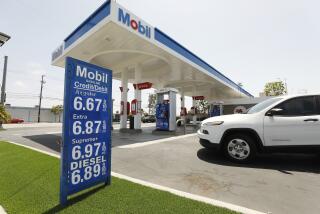Fuel Efficiency
- Share via
I applaud The Times’ article describing the complexities of the government’s Strategic Petroleum Reserve (“Saving Oil for a Rainy Day,” Dec. 13). I would point out, however, that SPR is neither the least expensive nor the lowest-risk option for enhancing America’s energy security. This point was forcefully articulated in the 1981 energy security study done for the Defense Department’s Civil Defense Preparedness Agency.
SPR incurs not only a purchase cost, but storage costs and carrying charges as well. This puts the cost of SPR oil in excess of $40 per barrel. Some analysts seriously question whether taxpayers will recoup their $18 billion (and climbing) SPR expenditure when the oil is sold during an oil supply disruption. Moreover, once drained, America has used up its insurance against future disruptions, and is back to a very vulnerable condition.
In sharp contrast, improving the efficiency of America’s vehicle fleet from today’s 18 miles-per-gallon average to an achievable 60 miles-per-gallon would largely eliminate foreign oil imports. The cost of the improvements would be recouped within several years from the savings on gasoline purchases. The net effect of these efficiency improvements is to locate a “mini SPR” inside each vehicle. In the event of a major oil disruption, a highly efficient fleet of cars could travel several times farther than their gas-guzzling counterparts. The bottom line is that investing in vehicle efficiency offers Americans a way to save money while making the U.S. more energy secure. From this vantage point, the government should be pursuing an increase in the nation’s auto fuel economy standards, not reducing the standard, as was recently done.
CLAUDINE SCHNEIDER
Washington
The writer is a Republican member of the House of Representatives from Rhode Island.






